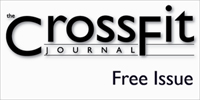 I recently competed in the Carlsbad Half Marathon and am gearing up for several more running events in the near future.
I recently competed in the Carlsbad Half Marathon and am gearing up for several more running events in the near future.I have found BOOTCAMP 619 has been a great motivator for me to get into these events and while participating in them myself have been encouraging many of my friends and clients to join in the fun.
People are often intimidated by the idea of competing in a marathon event at first. It is a great sport and there are some very easy steps you can do to get ready for the big show.
Walking
Don’t over do it and jump right into something you are not comfortable with. Rather than dive in the pool, first start by sticking your toes in the water. Begin walking for a half hour until that feels too easy for you.
Speed It Up
Once you are ready, pick up the pace. Walk quickly for the same amount of time. You may be surprised that you can get your heart rate up by a fast walk. Make sure to challenge yourself!
Back and Forth
Start with a jog and rest a bit by walking when needed. Make sure to increase the amount of jogging time and decrease the amount of walking time as you get more accustomed to the exercise.
Give It Some Time
If you aren’t ready for a full jog, increase the amount of time that you jog and walk intermittently. For example, if you had been doing it for 30 minutes, bump up the time to 45 minutes and then an hour as you get more comfortable.
Getting involved with a team can be a great motivator. People who share common interests are great for lifting your spirits when you are feeling unmotivated or hitting the wall. At BOOTCAMP 619, we foster a spirit of enthusiasm and encouragement in all our activities.












